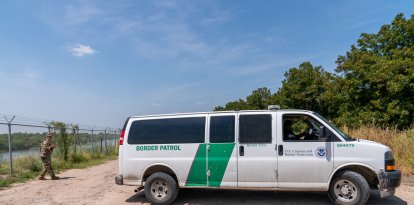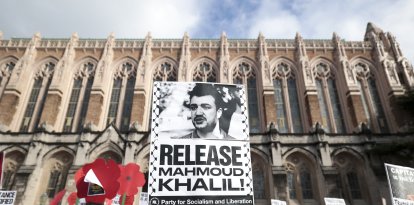Total solar eclipse: Everything you need to know so you don't miss out
The weather could jeopardize the visibility of the astronomical phenomenon that will not occur again in the United States for another two decades.
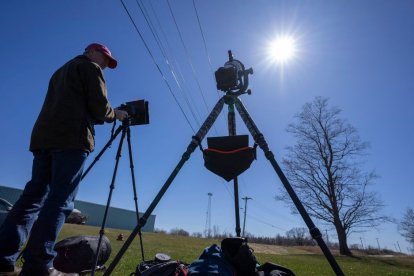
(AFP photo / Stan Honda)
This Monday, April 8, the most anticipated astronomical event of the year will finally arrive: the total solar eclipse that will be visible in most of the United States, Canada and Mexico. Fifteen states will welcome thousands of visitors. The phenomenon is said to be comparable to "20 or 30 Super Bowls." However, weather forecasts are not ideal. The National Weather Service warned that some states could expect cloudy skies or even storms during the eclipse:
Which states' weather could affect their visibility of the eclipse?
Affected states include Texas, Louisiana, southern Arkansas and Oklahoma. According to NBC News, those states may experience severe storms and even hail on Monday afternoon, jeopardizing the views for the nearly 20 million people who decided to travel to these regions to watch the event, especially in cities like Houston, Austin, San Antonio and Dallas, where traffic advisories are already underway.
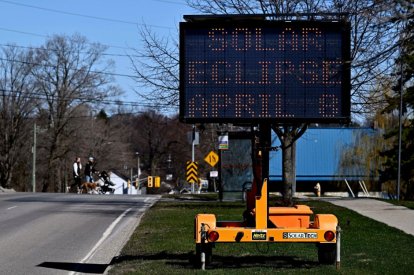
The rotating message on a digital sign advises people to expect traffic delays, one day before a total solar eclipse will be visible in Kingston, Ont., Sunday, April 7, 2024.
(Cordon Press)
However, it appears that bad weather in Dallas will begin right after the eclipse. The phenomenon will take place at 1:30 p.m. CT while, according to the National Weather Service, storms are expected to begin an hour and a half later, between 3:00 p.m. and 4:00 p.m. CT. This will not be the case in Kerrville and Junction, where bad weather will begin between 1:00 p.m. and 2:00 p.m. CT, right during the eclipse, although it will be mild and, therefore, should not prevent visitors from enjoying the event.
The weather prediction center also warned that it may be cloudy in Ohio, northwestern Pennsylvania and New York, preventing visitors from enjoying the eclipse.
Short-term rentals soar
The bad weather, however, hasn't seemed to stop tourists from visiting areas with better visibility. A report by AirDNA revealed that the phenomenon caused short-term rentals (Airbnb) to increase in several regions by approximately 88%, especially in cities where the eclipse will be seen. These places are already experiencing an influx of tourists who have traveled from all around the world to enjoy the event.
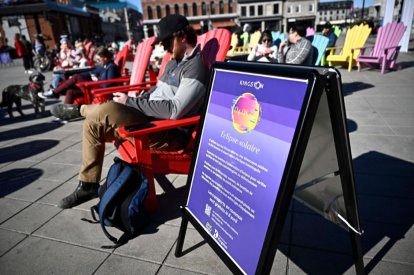
Safety information for viewing the total solar eclipse seen in Springer Market Square, an official viewing location, one day before the eclipse will be visible in Kingston, Ont., Sunday, April 7, 2024.
(Cordon Press)
According to the website, more than 110,000 short-term rentals were added. On the night of Sunday, April 7, the occupancy rate exceeded 90% in some cities. AirDNA said:
Again, Texas is the place with the most short-term apartments for rent. According to Fox Business, there were 9,616 listings in Austin and its occupancy rate is at 86.9%. It is followed by Dallas, which has 4,971 listings. Occupancy is currently at 95.3%.
Cleveland, Buffalo (New York), Killeen (Texas), Jeffersonville (Vermont), Niagara Falls (New York) and Lake Placid (New York) have also experienced a significant increase in short-term apartment rentals.
States prepare for the eclipse
In all of them, traffic increased exponentially during the days leading up to the astronomical phenomenon. Places like Indiana issued a state of emergency, along with other places that are expected to have good visibility of the event.
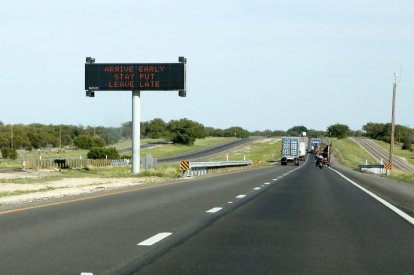
The Texas Department of Transportation (TxDot) has posted messages on variable message signs along I-10 Eastbound for the expected influx of traffic on the roads due to the Solar Eclipse near mile marker 372 on April 7, 2024.
(Cordon Press)
The sale of solar eclipse glasses also increased exponentially. This accessory is essential for those hoping to safely watch the eclipse, according to experts.
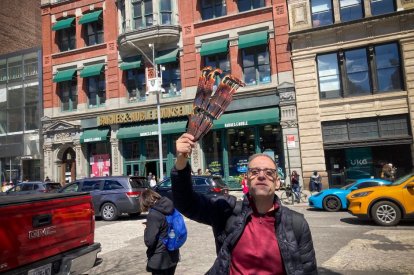
Businessman selling eclipse sunglasses in Union Square, New York, on Sunday, April 7, 2024.
(Cordon Press)
The event, broadcast live by NASA, will not be seen in the United States again until 2045, according to the Los Angeles Times. Before that, on August 12, 2026, another total solar eclipse will be visible, although only in Greenland, Iceland and Spain.
RECOMMENDATION







